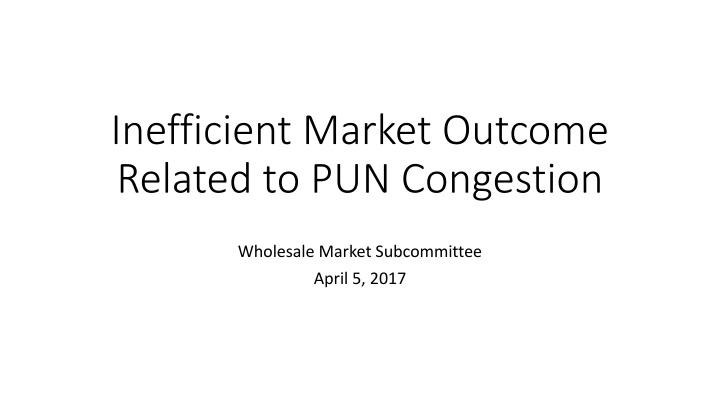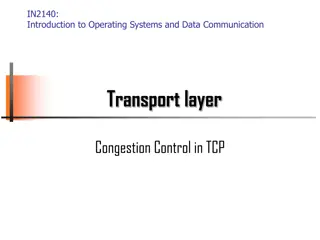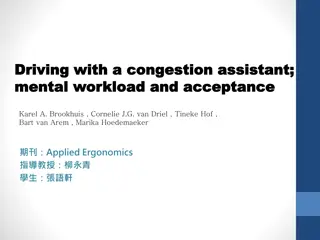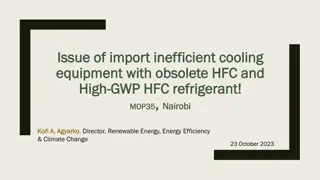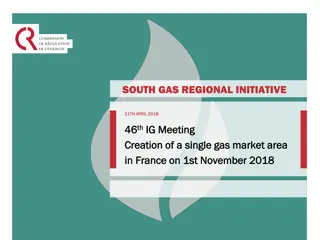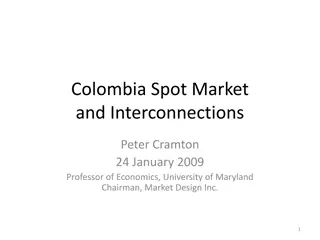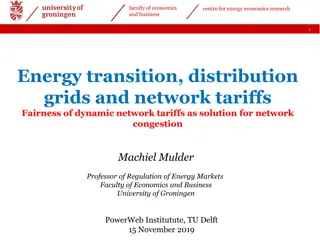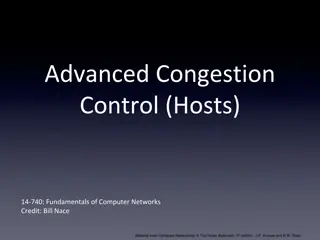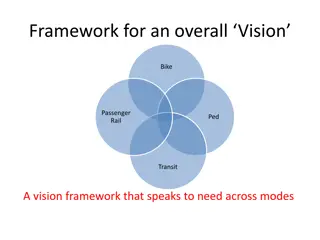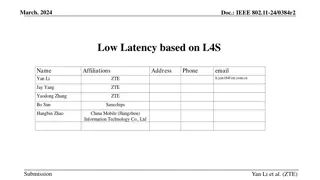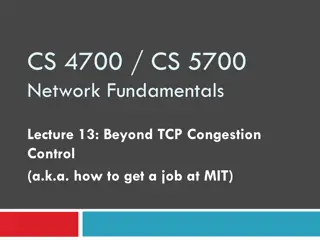Inefficient Market Outcome Related to PUN Congestion
Market participants in the ERCOT markets are required to identify and report provisions in procedures leading to inefficient outcomes. Inaccurate modeling of Load Distribution Factors and discrepancies between Load Zone prices and LMPs at PUN stations can result in inefficient DAM transactions and unhedgeable Real-Time Revenue Neutrality Charges.
Download Presentation

Please find below an Image/Link to download the presentation.
The content on the website is provided AS IS for your information and personal use only. It may not be sold, licensed, or shared on other websites without obtaining consent from the author.If you encounter any issues during the download, it is possible that the publisher has removed the file from their server.
You are allowed to download the files provided on this website for personal or commercial use, subject to the condition that they are used lawfully. All files are the property of their respective owners.
The content on the website is provided AS IS for your information and personal use only. It may not be sold, licensed, or shared on other websites without obtaining consent from the author.
E N D
Presentation Transcript
Inefficient Market Outcome Related to PUN Congestion Wholesale Market Subcommittee April 5, 2017
Per PUCT rule 25.503(f)(12), A market participant operating in the ERCOT markets or a member of the ERCOT staff who identifies a provision in the ERCOT procedures that produces an outcome inconsistent with the efficient and reliable operation of the ERCOT- administered markets shall call the provision to the attention of ERCOT staff and the appropriate ERCOT subcommittee.
Aggregate Settlement Points DAM Load Distribution Factors (LDFs) are used in the DAM to: 1. Model transactions (Buy, Sell, Source & Sink) at the Load Zones 2. Calculate Load Zone prices, which is LDF weighted average PUNs have their LDF in the DAM zeroed out Real Time Telemetered and State Estimator data is used in Real Time to calculate Load Zone, which is also load weighted PUNs have their Telemetered and State Estimator data in Real Time zeroed out in calculating Load Zone Prices
Example PUN Calculation Current process PUNs contributing to price formation Normalized Load Distribution Factor Normalized Load Distribution Factor Load LZ_A Price Component (Price x Normalized LDF) Load LZ_A Price Component (Price x Normalized LDF) Aggregation Settlement Point Price at each Point Price at each Point Location Distribution Factor Distribution Factor LZ_A LZ_A LZ_A LZ_A LZ_A LZ_A LZ_A LZ_A LZ_A LZ_A LZ_A LZ_A Node 1 Node 2 Node 3 Node 4 Node 5 Node 6 Node 7 Node 8 Node 9 Node 10 Node 11 Node 12 2.5 5.6 2.2 9.7 1.9 2.2 2.6 7.4 2 5.4 7 0 5.15% 11.55% 4.54% 20.00% 3.92% 4.54% 5.36% 15.26% 4.12% 11.13% 14.43% 0.00% 20.2 24.1 20.5 22.9 24.5 20.0 26.3 28.2 23.5 27.7 28.5 100.0 1.04 2.78 0.93 4.58 0.96 0.91 1.41 4.30 0.97 3.08 4.11 0.00 2.5 5.6 2.2 9.7 1.9 2.2 2.6 7.4 2 5.4 7 80 1.95% 4.36% 1.71% 7.55% 1.48% 1.71% 2.02% 5.76% 1.56% 4.20% 5.45% 62.26% 20.2 24.1 20.5 22.9 24.5 20.0 26.3 28.2 23.5 27.7 28.5 100.0 0.39 1.05 0.35 1.73 0.36 0.34 0.53 1.62 0.37 1.16 1.55 62.26 Total 48.5 100% $25.08 128.5 100% $71.72 This inefficiency has the ability to create unhedgeable Real Time Revenue Neutrality Charges
Issues with PUNs not being in Price Formation PUN loads may be consuming partially or completely from the grid based on low power prices and or requirements for their operations The transmission system neighboring the PUNs is designed and planned based on assumption that PUNs are self served and that there is minimal to no dependence on the grid LMPs at PUN stations do not provide price incentive for the PUN load to respond because LMPs at PUN stations are ignored in the calculation of the Load Zone price The inaccurate modeling of the LDFs and the disconnect between Load Zone price and LMPs at PUN stations create an opportunity for inefficient outcomes in DAM transactions
PUN LDFs Being Zero in DAM Causes Real Time Revenue Neutrality Charges to Loads In Day Ahead PUN LDFs are assumed to be zero, regardless of whether the PUN is expected to be withdrawing power from the grid. 1. The model in the DAM assumes that there is more transmission capacity available on the PUN tie lines and on the neighboring transmission lines than will actually be available in Real Time. 2. This under-representation of load at the PUN station allows for more transactions to be awarded in the DAM for Point to Points (PTPs) that SINK or Virtuals that BUY at the PUN station (and to some extent, at other points in the neighboring transmission), even if a PUN load s QSEs participates in the DAM at the Load Zone. 3. When congestion caused by or exacerbated by consumption at the PUN station occurs in Real Time, revenues collected by ERCOT at the Load Zone level are not enough to cover payments ERCOT needs to make in order to honor PTPs that SINK or Virtuals that BUY at the PUN station. The mismatch in the revenues collected at the Load Zone price and the payments that are owed to the holders of PTPs and Virtuals result in Real Time Revenue Neutrality charges to loads. 4. Because PUN LMPs are not averaged into the Load Zone price, it is impossible to hedge against congestion created or exacerbated by consumption at a PUN station. 5. On March 14th 2017, the RT Revenue Neutrality charge to loads was ~$4.9M, approximately 98% of which was created by ERCOT paying for virtual buys and PTP transactions that sink at a PUN station Sustained low power prices may continue exposing load to Real Time Revenue Neutrality Charges
Overall solution ERCOT stakeholders should work to create a process to include a LDF for PUNs in the DAM and incorporate PUN LMPs in Real Time prices.
Quick Fix to Limit Uplift of Real Time Revenue Neutrality Charges to Load Do not allow PTPs to sink or virtual buys at PUN settlement points This should limit the impact to load PTPs that sink or virtual buys at PUN settlement points are not hedges for the PUN, since the PUN is paying a Load Zone price. This will not solve the issue when the PUN-created congestion results in high LMPs at points near the PUN
